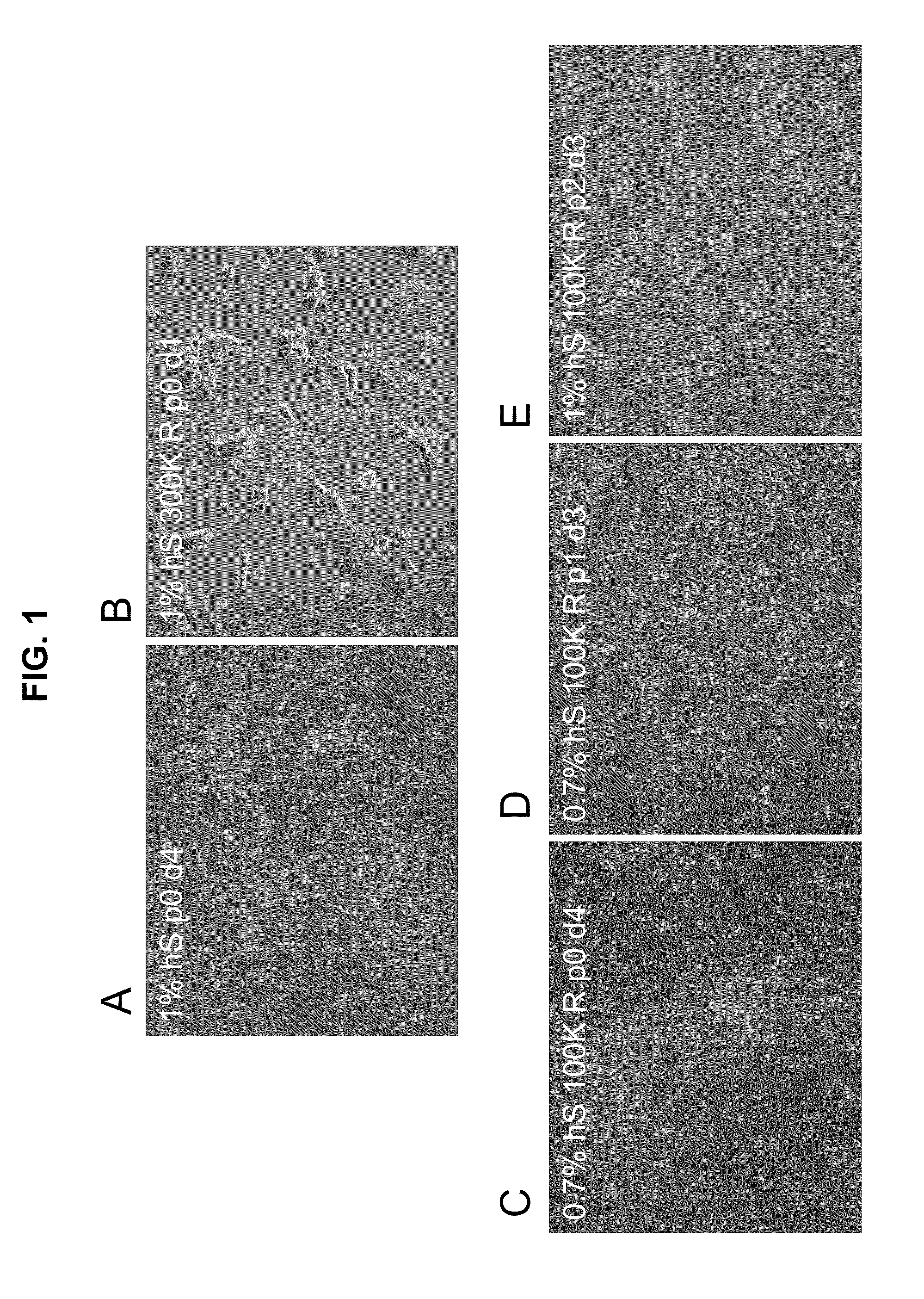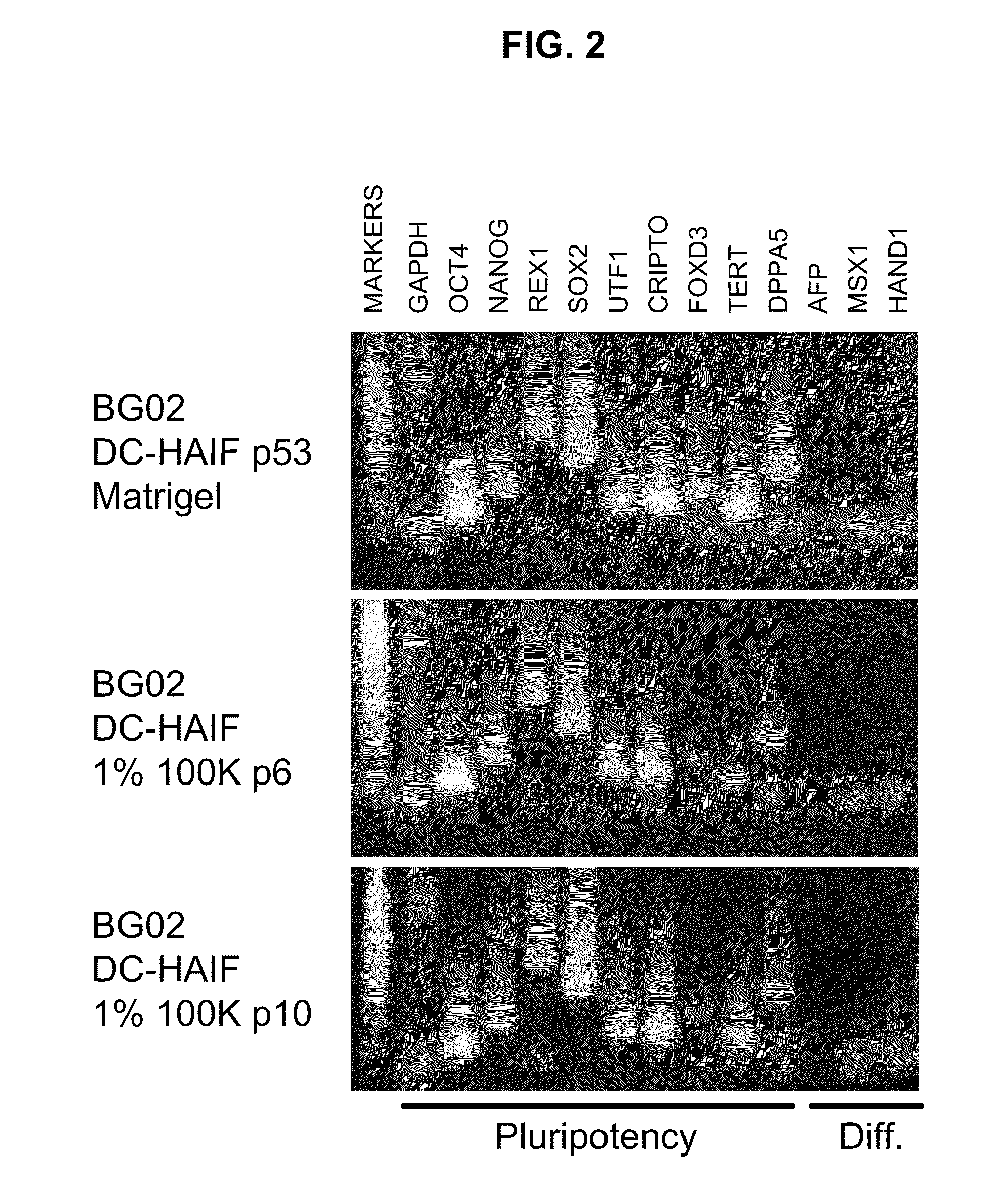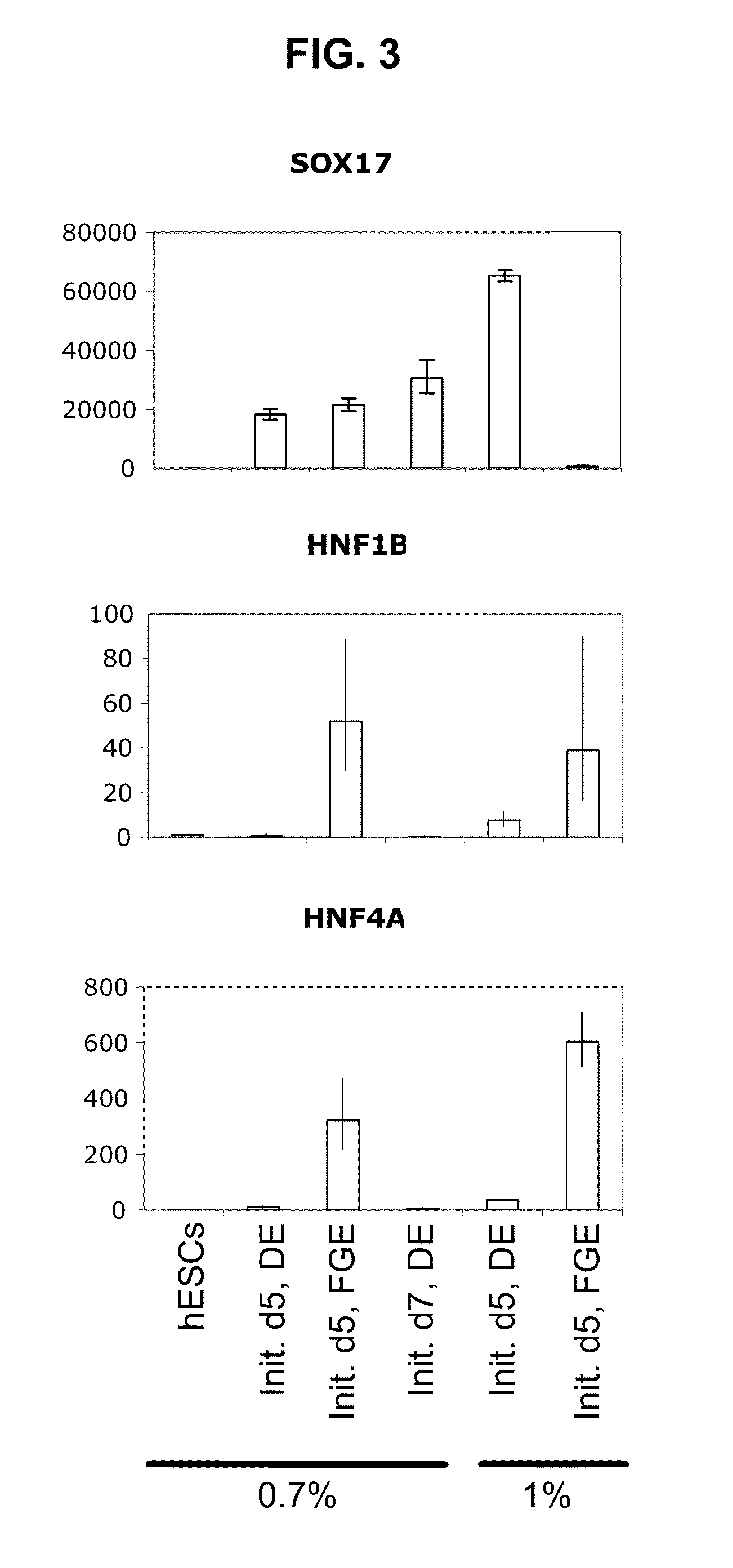Methods and compositions for feeder-free pluripotent stem cell media containing human serum
a technology of pluripotent stem cells and compositions, which is applied in the direction of cell culture active agents, embryonic cells, artificial cell constructs, etc., can solve the problems of many stem cell culture conditions that are not reproducible, many suboptimal methods for isolating and growing stem cells from primates reported, etc., and achieve the effect of maintaining the potential of stem cells
- Summary
- Abstract
- Description
- Claims
- Application Information
AI Technical Summary
Benefits of technology
Problems solved by technology
Method used
Image
Examples
example 1
Proliferation of Undifferentiated Pluripotent Stem Cells in a Feeder-Free Culture Containing Small Quantities of Human Serum
[0086]To elucidate a media and cell culture condition that is compatible with the expected regulatory guidelines governing clinical safety and efficacy, Applicants have provided a hESC scale-up strategy which facilitates this requirement as described in more detail below. Long-term cultivation of undifferentiated hESCs in a feeder-free, conditioned-medium-free, and matrix-free medium is crucial for providing an unlimited supply of cells for cell-based therapies, as well as for directing the lineage-specific differentiation of hESCs.
[0087]Previously, the minimal essential conditions needed to support the long-term growth of undifferentiated hESCs were determined. See PCT / US2007 / 062755). The developmental stage of the stem cells was assessed, in part, based on morphological analysis, as well as by expression of cell surface markers and alkaline phosphatase analys...
example 2
Long Term-Self Renewal of HESCS using 100K Human Serum Fraction
[0097]To be useful, any hESC culture medium has to be able to support long-term or prolonged self-renewal of the cells, i.e. for several passages. To demonstrate that the DC-HAIF containing hS media described herein can support long-term or prolonged self-renewal of hESCs, hESCs were cultured in DC-HAIF with about 1% 100 k human scrum retentate fraction. To make certain that the hESCs maintained their pluripotency and did not spontaneously differentiate to different cell lineages, RT-PCR analysis was performed using cell markers well known in the art for describing and identifying pluripotent stem cells and / or differentiated stem cell-derived lineages. RT-PCR was performed on hESC cultures after 6 and 10 passages. In control cultures, RT-PCR was performed after 53 passages in defined media alone (FIG. 2). FIG. 2 shows that typical pluripotent stem cell markers were expressed in cultures from 6 (middle panel), 10 (bottom ...
example 3
HESCS Maintained in a Defined Media Containing 100K Human Serum Fraction can Differentiate into Various Cell Lineages
[0098]To determine whether hESCs cultured as described herein could also differentiate to various hES-derived cell lineages, BG02 cells were differentiated to hES-derived cells in vitro (FIG. 3). hESCs were first maintained for 3 splits for 5 to 7 days in 0.7% or 1% hS fractionated using a 100K cut-off spin column. hESCs were then induced to differentiate on days 5 and 7, respectively, to definitive endoderm by exposing cultures to RPMI containing 2% fatty acid-free BSA, 25 ng / ml Wnt3a, 100 ng / ml Activin A and 8 ng / ml FGF2 for 24 hours, followed by RPMI containing 2% BSA, 100 ng / ml Activin A and 8 ng / ml FGF2 for two more days (d3 of differentiation). Further differentiation of the definitive endoderm cells to foregut endoderm was performed by exposing the cells to RPMI containing 2% BSA, 50 ng / ml FGF7 and 0.25 μM KAAD-cyclopamine for about 2-3 more days (d6 of differe...
PUM
 Login to View More
Login to View More Abstract
Description
Claims
Application Information
 Login to View More
Login to View More - R&D
- Intellectual Property
- Life Sciences
- Materials
- Tech Scout
- Unparalleled Data Quality
- Higher Quality Content
- 60% Fewer Hallucinations
Browse by: Latest US Patents, China's latest patents, Technical Efficacy Thesaurus, Application Domain, Technology Topic, Popular Technical Reports.
© 2025 PatSnap. All rights reserved.Legal|Privacy policy|Modern Slavery Act Transparency Statement|Sitemap|About US| Contact US: help@patsnap.com



